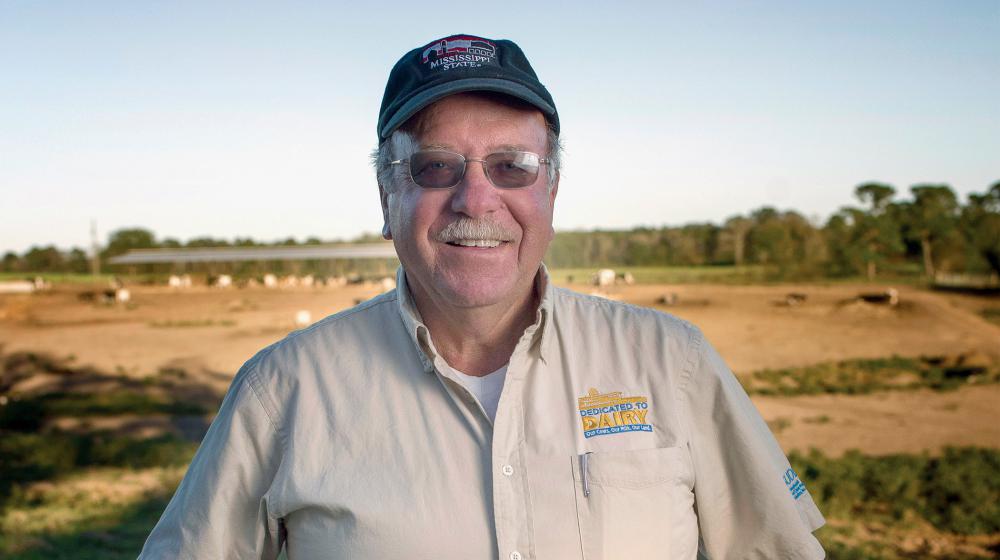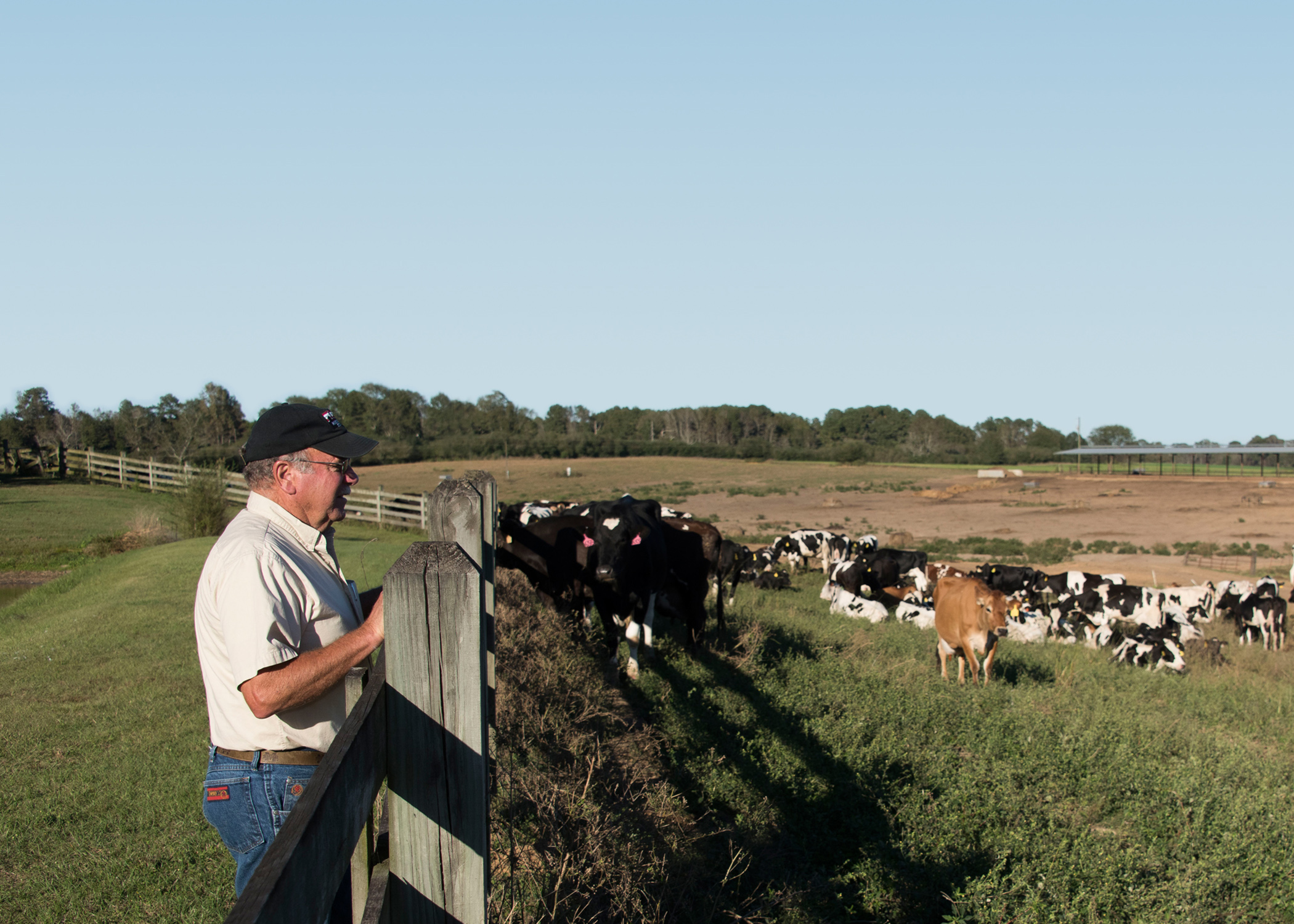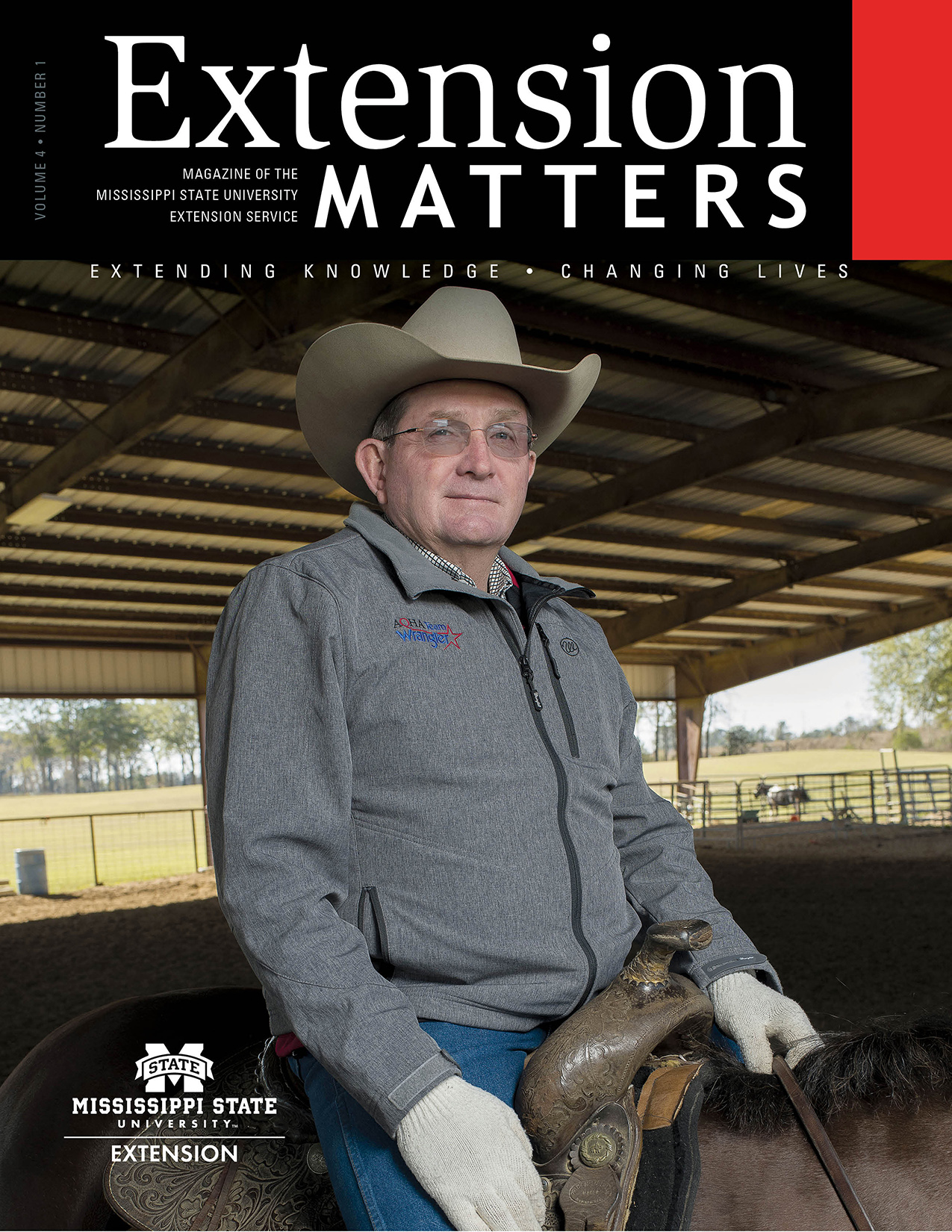From Cotton to Milk

Producer Leans on Extension for Guidance
Story by Susan Collins-Smith • Photos by Kevin Hudson
Pat Ard has tended his grandfather’s legacy since 1971, when he took the helm of the family farm from his father.
What started as a 211-acre Lincoln County cotton farm in 1894 is now a 1,200-acre dairy farm with more than 240 Holstein cows.
“My parents began milking a small number of Jersey cows in 1940 to supplement their other farm income, and they were selling Grade C milk,” Ard explains. “In 1950, they started selling Grade A milk. We’ve come a long way since then.”
Pat Ard
Ard has taken steps through the years to make his dairy farm more efficient and profitable. During this journey, his relationship with the Mississippi State University Extension Service has been important to his success and helped him make informed decisions.
“In the 1970s and 1980s, I saw a need to incorporate more technology into the dairy,” Ard says. “Extension has played a big role in keeping me up-to-date with technological advances and other techniques that help us stay in business.”
One of the first major improvements to the dairy herd was incorporating an on-farm breeding program to improve the herd’s genetics. Ard and his father attended an Extension workshop on artificial insemination in 1968, and Ard has continued breeding his own cows and keeps up with advancements through Extension education. For each animal, the Ards also began keeping meticulous records, critical tools for making management decisions.
Shortly after taking over the farm, Ard, along with other dairy farmers in the area, joined the Dairy Herd Improvement Association, an organization that helps dairy farmers create and manage their herd records and data for herd enhancement. The Ards also pooled their money to buy milk meters—electronic devices that can inform producers about individual cow milk yield, milk quality, and cow health.
“We got advice on both of these decisions from our Extension agents, because we knew we could trust them,” Ard says. “They aren’t trying to sell us something.”
Ard participates regularly in classes, field days, and other training opportunities offered by Extension, and he works closely with Extension Dairy Specialist Dr. Amanda Stone and Extension County Coordinator Rebecca Bates.
“There is nothing we can do about the price of milk, but we can control the quality of our product by making sure we have first-rate animals and by using the best practices to keep them healthy,” Ard says. “Every Extension agent and specialist I’ve worked with over the years has been willing to go the extra mile to help me. All I have to do is pick up the phone and call. They make my job much easier.”
“It has been an eye-opener for me to see the need for this,” Ard says. “A lot of children don’t have the opportunity to see agriculture firsthand. It’s important to keep the general public acquainted with what goes on in agriculture.”
Pat Ard
In the past 12 years, various factors have caused Mississippi’s dairy industry to shrink, but some producers, including Ard, have remained successful.
“The dairy industry is a difficult one to be in,” Stone says. “Prices are variable on both inputs and outputs. Producers like Pat who are still in business made mostly solid financial decisions and set goals they still want to achieve.
“He’s also open to my recommendations. We’ve worked together on nutrition improvements for the herd, and I’ve brought in experts from other states to help him with building and parlor design.”
Ard has also been willing to evolve and diversify his business, and he has added an agritourism element to his farm. During October, the farm opens to schools and families for tours and other activities.



